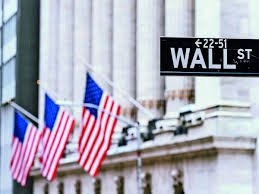With the Fed Meeting in Focus, a significant spotlight will be cast on the Federal Reserve in the coming week as global investors prepare for fresh insights into the central bank’s path forward on interest rates. With a delicate balance needing to be struck between a weakening labor market and persistent inflation above the Fed’s 2% target, the upcoming policy meeting has been positioned as a potential turning point for market sentiment.
Over the past two months, a strong rebound has been witnessed in the S&P 500 Index (.SPX). This upward movement has occurred as concerns surrounding trade barriers and economic disruptions were tempered by President Donald Trump’s “Liberation Day” announcement on April 2. That announcement had initially sparked a sharp downturn in equity markets, but optimism has since been restored as investors reassessed the longer-term economic impact.
Fed Meeting in Focus: Monetary Policy in the Spotlight
The Federal Reserve’s Federal Open Market Committee (FOMC) will be meeting next week, and financial markets have been eagerly anticipating both the decision and the language accompanying it. The Fed’s tone and economic projections will be closely studied for clues about the direction of interest rates into the second half of 2025.
Although no rate cut is expected to be announced immediately, attention will be directed toward the “dot plot” projections and comments made by Fed Chair Jerome Powell during the post-meeting press conference. It is widely believed that a dovish shift in tone may be signaled if labor market softness continues to emerge in economic data. However, with inflation readings remaining uncomfortably above the 2% mark, policymakers have found themselves constrained.
Recent Economic Data and Market Expectations
The U.S. labor market has shown signs of cooling in recent weeks. Job openings have declined steadily, wage growth has moderated, and hiring momentum has slowed. Simultaneously, core inflation—especially in service categories—has remained sticky. This conflicting data has made the Fed’s job increasingly complex.
A majority of traders, as reflected in CME’s FedWatch tool, have priced in the possibility of a rate cut later in the year—most likely in September or November. However, that expectation remains contingent upon further confirmation that inflation is trending downward in a sustainable manner.
Meanwhile, longer-term Treasury yields have remained volatile, reflecting market uncertainty regarding the Fed’s commitment to its inflation target. Any hawkish surprises in next week’s meeting could lead to a swift repricing of assets.
Impact on the Stock Market Rally
Equities have staged a notable recovery since April. The S&P 500, which had experienced a sharp drop following heightened fears of protectionist policies, has bounced back strongly. This rally has been supported by expectations that the Fed may soon pivot to a more accommodative stance and by easing geopolitical tensions.
Technology and consumer discretionary sectors have led the charge, as investors bet on continued resilience in consumer spending and innovation-driven growth. However, some analysts have warned that the rally could be vulnerable to a pullback if the Fed’s guidance is interpreted as less dovish than expected.
A rally based purely on expectations rather than fundamentals has often been considered fragile. Investors will be watching closely to ensure that corporate earnings and macroeconomic stability continue to support elevated stock valuations.
Global Implications and Dollar Movement
Currency markets have also been sensitive to shifting Fed expectations. The U.S. dollar has weakened slightly in recent sessions, as investors have increasingly bet on a less aggressive tightening cycle. Should the Fed maintain a hawkish stance, a reversal in dollar weakness could be observed, affecting multinational earnings and commodity prices.
Emerging markets and global risk assets have benefited from the perception that the Fed may soon ease. Capital inflows have resumed in several economies, supported by a risk-on sentiment. However, any abrupt shift in U.S. monetary policy could trigger renewed volatility in global markets.
Investor Sentiment and Volatility Measures
Investor sentiment, as measured by the AAII sentiment survey, has leaned bullish in recent weeks. The VIX volatility index has also remained subdued, suggesting that complacency may be building among equity investors. Next week’s Fed meeting could serve as a catalyst to shift sentiment if the outcomes deviate from expectations.
Institutional investors have been observed rotating into defensive sectors and diversifying into fixed-income assets as a precaution. Portfolio adjustments ahead of the Fed meeting have reflected a strategy to mitigate downside risk while remaining positioned for upside surprises.
Final Thoughts: Market at a Crossroads
Wall Street has entered a crucial phase, with the Federal Reserve set to provide direction amid mixed economic signals. The central bank’s communication strategy will be critical in shaping market reaction, as investors seek clarity on the interest rate path and inflation management.
While optimism has fueled the recent rally, sustained gains will depend on the Fed’s ability to navigate the narrow path between controlling inflation and supporting economic growth. A misstep in policy communication or an unexpected shift in tone could introduce fresh volatility.
With bond yields, corporate earnings, and global growth dynamics all in play, the coming week will demand a cautious yet attentive stance from market participants. Long-term trends will be influenced not just by policy decisions, but by the credibility and consistency with which they are delivered.
